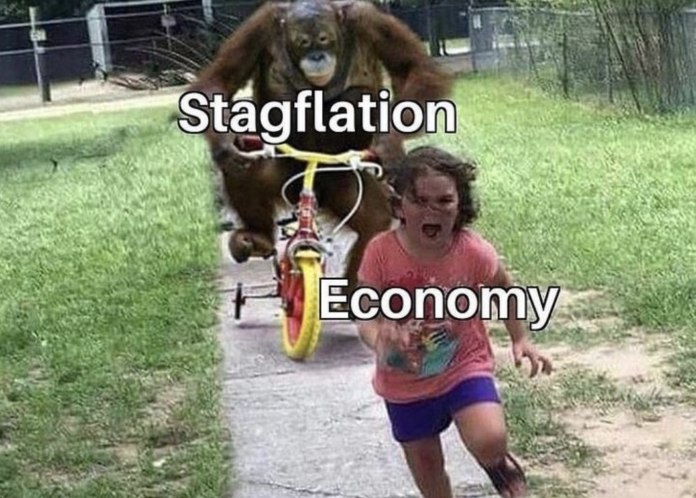Those economic punters selling a short sharp recession point to a strong job market, tourism and high export prices to get us through 2023.
I believe those punters are wrong because they ultimately don’t understand the actual problem.
Since 2008 economists have tried to understand what happened to global inflation after Central Banks printed $25Trillion in quantitive easing to stop the Global Financial Crisis.
It looks like that inflation was dissipated via Just-in-time global supply chains that reached into the deepest, darkest most de-unionized factories in China.
With China’s zero Covid policy now collapsing into full blown Covid apocalypse alongside constant global warming disruptions to the agricultural calendar alongside base ingredient counties like Russia and the Ukraine out of production all collide into producing more intense inflation generated by scarcity and a ramping up of cost.
Most on mortgages in NZ will walk off 3.5% onto 7%.
Our low unemployment rate is being generated by the closed border, the millisecond business can get those cheaper workers in, watch the unemployment rate jump.
We are at risk of stagflation, not a short sharp recession.

Increasingly having independent opinion in a mainstream media environment which mostly echo one another has become more important than ever, so if you value having an independent voice – please donate here.
If you can’t contribute but want to help, please always feel free to share our blogs on social media



I don’t agree with this analysis. Precisely because China has ended its covid isolation. Yes, China will suffer due to their lack of preparedness, but overall China will expand during 2023. That will boost global demand. This is a much more significant factor for the international economy than Russia’s war.
If there is a recession, which there may not be, then it will be short.
Many factors indicate that NZ will do OK during 2023. Increased migration, the recovery of international tourism, the return of international students. All these things will boost the economy much more significantly than the current crop of doomsayers seem to think.
Chinas population is overstated by a hundred billion and they’re old. Birth rate of one. China’s got 10 years.
Hundred million*
@Sam 10 years seems too short but agree with the direction of travel.
Demographic collapse, highly dependant of energy imports and foreign inputs for agriculture via trade routes it cannot secure from sources that are going offline. Housing market falls that are vapourising middle class wealth and more besides.
China’s rise is completely predicated on globalisation and that ride is over. Xi has backtracked on Deng’s reforms and since the CCP cannot guarantee continued economic prosperity it seems to be substituting Han ethno-nationalism with a flavour of Cultural Revolution 2.0.
That was all in motion before covid, and zero-covid policies.
Even if the population is overstated by 100 million int is still 1.3 billion. They are not old yet, though unless the birth rate increases, they will become so. In short China is still a powerful driver of the world economy.
It is probable birth rates will increase, so their aging and population decline will not be as dramatic as initially thought.
Where there’s a will there’s a way!
Q.E. was really a wealth transfer: as the paper currencies were devalued, wages did not increase by the same amount (yet again).
Consumer prices did not inflate quickly, because Q.E. only prints bank reserve certificates, which are for clearinghouse use, and cannot be withdrawn.
Q.E. still blew a bubble, though: in real estate, stocks and other financial assets. Those newly printed reserves financed ultra-cheap loans, used to bail out insolvent companies and to finance speculation.
Stagflation will likely continue. Political pressure will force the Fed to pivot, as positive real rates will bankrupt many companies, and also cause a sovereign debt crisis.
The level of debt is unpayable, and it will inevitably be inflated away (by printing paper currency) to protect both investors and the U.S. government from insolvency.
The U.S. proxy war will further create artificial commodity shortages for countries participating in the sanctions.
One way out would be attempting a currency reset (write off the debts using printed currency, then return to the gold standard), bilateral deals to increase commodity supply (join B.R.I.C.S.), and then mass industrialisation (new W.P.A. scheme, import substitution, seek direct investment from S.C.O/E.A.E.U.)
Comments are closed.